
The Book of Esther, also known in Hebrew as "the Scroll", is a book in the third section of the Hebrew Bible. It is one of the five Scrolls in the Hebrew Bible and later became part of the Christian Old Testament. The book relates the story of a Jewish woman in Persia, born as Hadassah but known as Esther, who becomes queen of Persia and thwarts a genocide of her people.

Esther is the eponymous heroine of the Book of Esther. Set in the Persian Achaemenid Empire, it tells how king Ahasuerus seeks a new wife after his queen, Vashti, is deposed for disobeying him. Esther is chosen to fulfill this role due to her beauty. Ahasuerus' grand vizier, Haman, is offended by Esther's cousin and guardian, Mordecai, due to his refusal to prostrate himself before Haman. Consequently, Haman plots to have all the Jewish subjects of Persia killed, and convinces Ahasuerus to permit him to do so. However, Esther foils the plan by revealing Haman's eradication plans to Ahasuerus, who then has Haman executed and grants permission to the Jews to kill their enemies instead, as royal edicts cannot be revoked under Persian law.

Mordecai is one of the main personalities in the Book of Esther in the Hebrew Bible. He is described as being the son of Jair, of the tribe of Benjamin. Mordecai was also the cousin and guardian of Esther, who became queen of Persia under the reign of Ahasuerus. Mordecai's loyalty and bravery are highlighted in the story as he helps Esther foil the plot of Haman, the king's Vizier, to exterminate the Jewish people.

Purim is a Jewish holiday which commemorates the saving of the Jewish people from annihilation at the hands of an official of the Achaemenid Empire named Haman, as it is recounted in the Book of Esther.
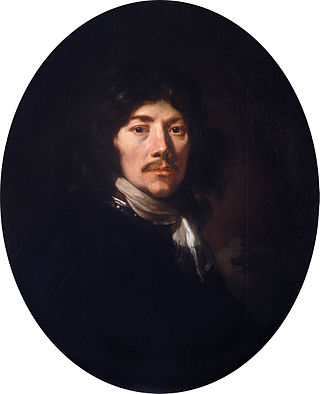
Jacob van Loo was a painter of the Dutch Golden Age, chiefly active in Amsterdam and, after 1660, in Paris. Van Loo is known for his conversational groupings; particularly his mythological and biblical scenes generally attributed to the genre of History painting. He was especially celebrated for the quality of his nudes to the extent that, during his lifetime, particularly his female figures were said to have been considered superior and more popular than those of his Amsterdam contemporary and competitor Rembrandt. In 1663, three years after fleeing to Paris, Jacob van Loo was accepted into the Académie royale de peinture et de sculpture.
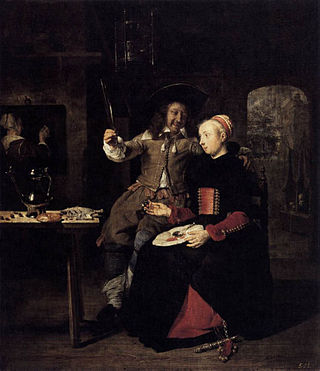
Gabriël Metsu (1629–1667) was a Dutch painter of history paintings, still lifes, portraits, and genre works. He was "a highly eclectic artist, who did not adhere to a consistent style, technique, or one type of subject for long periods". Only 14 of his 133 works are dated.

Rembrandt Harmenszoon van Rijn, usually simply known as Rembrandt, was a Dutch Golden Age painter, printmaker and draughtsman. An innovative and prolific master in three media, he is generally considered one of the greatest visual artists in the history of art and the most important in Dutch art history. It is estimated Rembrandt produced a total of about three hundred paintings, three hundred etchings and two thousand drawings.

Museum Geelvinck Hinlopen Huis was situated from its opening 1991 till the end of 2015 in a canal-side mansion, the Geelvinck Hinlopen Huis in Amsterdam, the Netherlands. This patrician mansion, close to the Rembrandtplein, was built for Albert Geelvinck (1647-1693) and Sara Hinlopen (1660-1749), then in an attractive and new laid-out section of the city towards the Amstel. In the year 1687 the couple moved into this double wide house, with storage rooms in the cellar, under the attic and in the warehouse on Keizersgracht 633, now the entrance.

This article is about Esther in rabbinic literature. Esther was the chief character in the Book of Esther. She is counted among the prophetesses of Israel. Allusions in rabbinic literature to the Biblical story of Esther contain various expansions, elaborations and inferences beyond the text presented in the book of the Bible.

Jan Victors or Fictor was a Dutch Golden Age painter mainly of history paintings of Biblical scenes, with some genre scenes. He may have been a pupil of Rembrandt. He probably died in the Dutch East Indies.

Jan Jansz. Vos was a Dutch playwright and poet. A glassmaker by trade, he also played an important role as stage-manager and director of the theatre. He organized, on the mayors' orders, processions and splendid decorated floats, which sometimes drew disapproval, criticism, and derision.

Jan Jacobszoon Hinlopen was a rich Dutch cloth merchant, an officer in the civic guard, a real estate developer in the Jordaan, alderman in the city council and a keen art collector. He would have been elected as a burgomaster, if he had not died at the age of forty, an age considered acceptable to be eligible. He was a prominent patron of the arts in his time, and there is some speculation on being an influential protector of Rembrandt and it is likely that he had good connections with Gabriel Metsu. Hinlopen, like his father-in-law, Joan Huydecoper I, is known in art history because of the poems by Jan Vos reciting the paintings in his house and members of the family. These paintings are spread all over the world, the poems nearly forgotten.
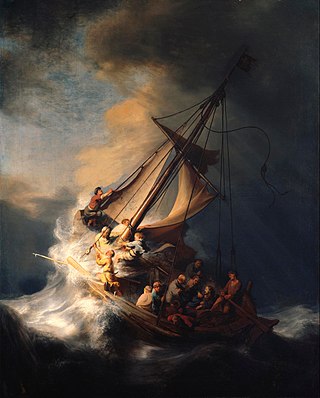
Jacob J. Hinlopen lived in a house with Hinlopen in the gable, now at 155 Nieuwendijk. He traded in cloth and Indian wares. In 1602 he was co-founder of the Dutch East India Company in Enkhuizen: his descendants inherited very old stocks. In 1617 he became the first person of Flemish origin to obtain a seat on the City Council.

Geelvinck was a Dutch surname. The family died out in the early 19th century.
Cornelis Geelvinck was important in the city administration of Amsterdam that arose after stadholder William III came to power in 1672, both as administrator, and as mayor in the years 1673, 1675, 1684, 1688 and 1689.
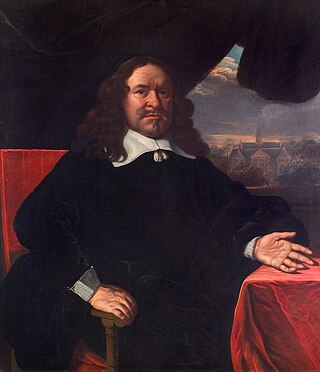
Joan or Johan Huydecoper van Maarsseveen, knighted lord of Maarsseveen, was an important merchant, financial expert, property developer active in Amsterdam and a director of the Dutch East India Company during the Dutch Golden Age. The republican minded Huydecoper was an influential member of the Dutch States Party, diplomat and six times mayor of Amsterdam. He was together with Cornelis de Graeff one of the initiators of the construction of the new town hall of Amsterdam and was a prominent patron of the arts and art collector. Beside Maarsseveen he held the feudal titles of Neerdijk, Thamen and Blockland. Huydecoper is representative of the love of art, political influence and welfare in the Golden Age.

Lucia Wijbrants or Wybrants was the daughter of Johannes Wijbrants, a silk merchant, whose ancestors had moved from Stavoren to Antwerp. After 1585 when Antwerp was occupied by the Spanish army, the family moved to Amsterdam and lived in a house in the Warmoesstraat, then a fashionable shopping street. They had eight more children: only Hendrick (1623–1669), Helena (1628–1721), and Johannes survived.
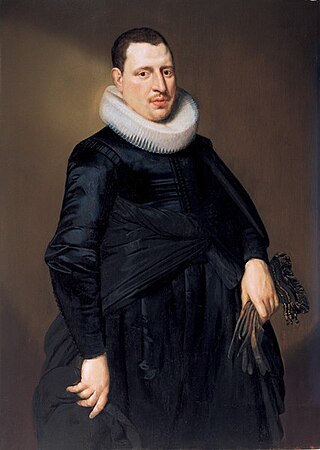
Cornelis van der Voort or van der Voorde was a Dutch Golden Age portrait painter from the early 17th century.
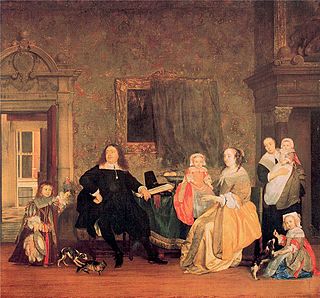
The Portrait of the Family Hinlopen or Family of burgomaster Gillis Valckenier is a painting in the Berlin Gemäldegalerie by the Dutch Golden Age painter Gabriël Metsu of about 1663. There have been various ideas among art historians as to which family is actually represented, with the two main candidates being the families of Jan J. Hinlopen or Gillis Valckenier, both wealthy and powerful figures in Amsterdam at the time.

Esther, also known as The Bible: Esther, is a 1999 American-Italian-German television film based on the Book of Esther, directed by Raffaele Mertes and starring Louise Lombard as Queen Esther, F. Murray Abraham as Mordechai, Jürgen Prochnow as Haman, Thomas Kretschmann as King Achashverosh and Ornella Muti as Vashti.




















